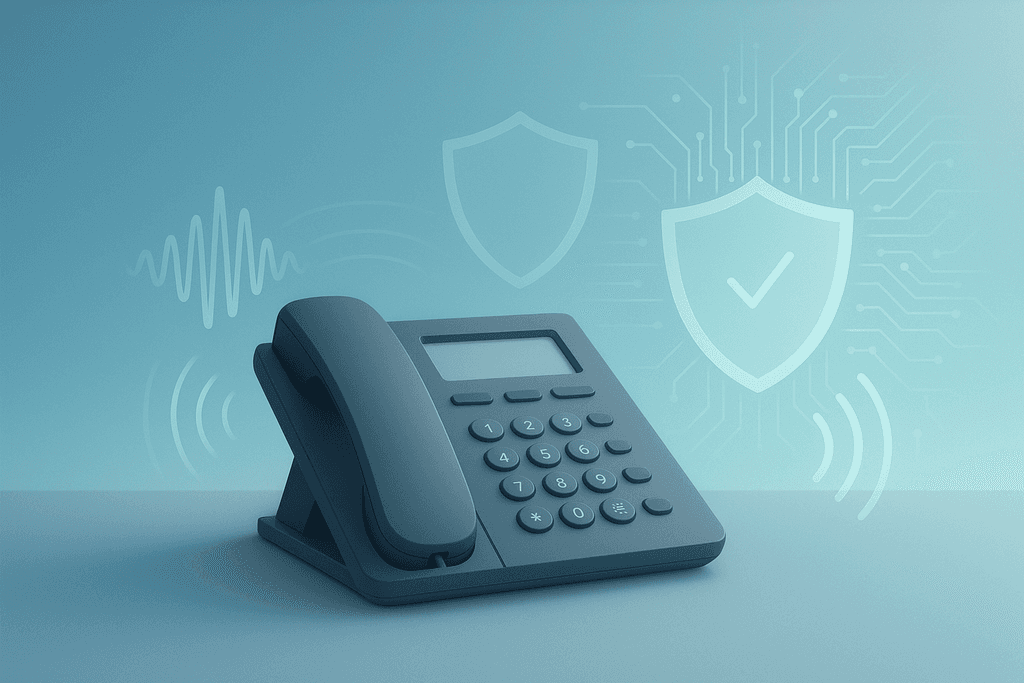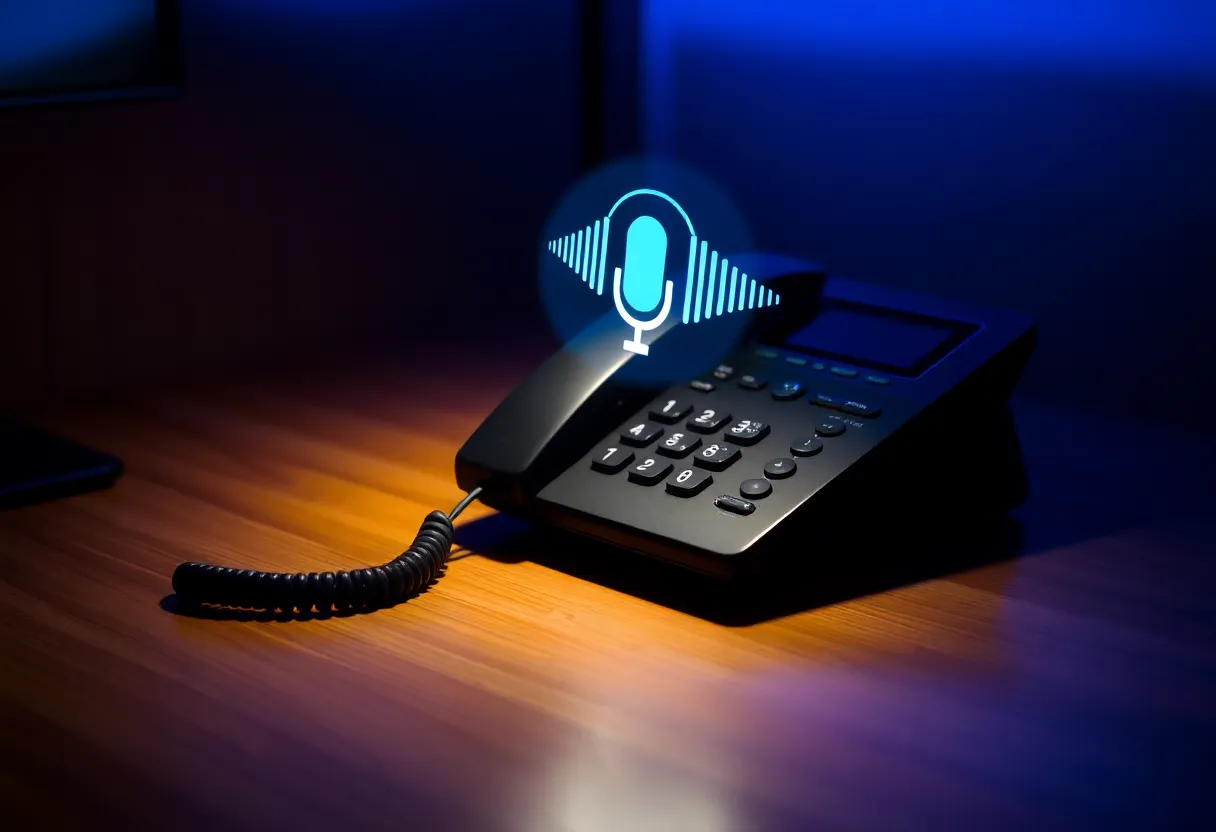U.S. consumers received nearly 5 billion robocalls in April 2025 (165 million/day), and the first four months of 2025 were up ~11.9% year over year, according to the YouMail Robocall Index reported by PR Newswire. (prnewswire.com)
For small businesses that publish their number online, these interruptions waste time, create missed opportunities, and frustrate staff. Voice AI can automatically screen out junk and route real callers 24/7.
What is voice AI for phone lines?
Voice AI is a virtual receptionist that answers calls in natural language, determines intent, and takes actions—like answering questions, booking appointments, collecting contact details, or handing off to a human. Think of it as a friendly teammate who never sleeps and gets smarter with every call.
What it can do
- Answer and triage every call—after hours and during peak times included.
- Challenge, deflect, or block likely spam before it rings your team’s phones.
- Route sales, service, and billing to the right destination automatically.
- Capture the caller’s name, number, intent, and notes, then email or sync to your CRM.
- Text links (directions, intake forms, booking pages) while still on the call.
Why spam calls are still rising in 2025
Despite carrier-level defenses, robocalls surged in early 2025. One reason these calls keep draining time and attention: most people ignore unidentified numbers, which hurts real business outreach. In fact, 80% of unidentified calls now go unanswered (Hiya, State of the Call 2025). See the Hiya report. (hiya.com)
For a local shop or services firm, the outcome is the same: spam interruptions increase while legitimate calls are harder to connect—unless you add intelligent screening and clear identification.
How voice AI filters spam without losing real customers
A good AI phone assistant combines conversation understanding with network and caller signals to sort real people from automated or malicious dialers. Here’s a practical approach you can adopt today.
Smart signals your AI should check
- Behavioral tells: dead air, press-1 prompts, or unnatural pauses in the first seconds.
- Reputation and attestation: caller ID trust, recent complaints, and call authentication status (STIR/SHAKEN attestation where available).
- Do‑Not‑Originate (DNO) lists: block calls that spoof invalid, unallocated, or inbound‑only numbers upstream whenever possible. The FCC now requires all providers in the call path to block calls purporting to originate from numbers on a reasonable DNO list and to use SIP code 603+ for analytics‑based blocking notifications on IP networks (2025 Report and Order). Federal Register summary. (federalregister.gov)
Conversation plays that protect your team
- Polite gatekeeping: ask for name, reason for calling, and a callback number; disconnect if answers are evasive or mismatched.
- Dynamic challenges: require the caller to repeat a short phrase or answer a context question—bots usually fail.
- Priority routing: if the caller asks about buying, booking, or paying, route to the right person or send your booking link by text.
Pair voice AI with clear caller identity (business name and local number). It reduces the chance of your outbound calls being ignored and makes call‑backs more likely.
Quick-start setup checklist
- Pick a local number customers recognize.
- Set greeting, brand tone, and top 10 questions/answers.
- Define routing: sales, service, emergencies, voicemail fallback.
- Turn on spam screening and dynamic challenges.
- Connect your calendar/CRM so leads and transcripts sync automatically.
- Decide on call recording and add a consent line if enabled.
- Test with 8–10 real scenarios (new lead, repeat customer, spammer, after‑hours).
- Measure for one week: answer rate, transfer rate, spam deflections, bookings.
Measuring ROI: a simple model
Inputs:
- Spam calls per day (estimate from phone logs)
- Minutes wasted per spam call (typ. 1–3 min)
- Hourly fully loaded wage for staff who answer
- Leads saved per week by 24/7 coverage (after‑hours + peak overflow)
- Average revenue per converted lead
Formula: Time saved cost = spam calls × minutes × wage ÷ 60. Revenue lift = leads saved × close rate × revenue per lead. Compare to your AI subscription to see breakeven.
Compliance and caller trust
This section provides general information, not legal advice. Always consult counsel for your specific use case.
Respect the National Do Not Call (DNC) Registry
Under the FTC’s Telemarketing Sales Rule, sellers/telemarketers must scrub against the DNC Registry at least every 31 days and can face civil penalties up to $53,088 per violation. Fees to access the Registry adjust annually (e.g., $82 per area code for FY2026). See the FTC’s guidance: Complying with the Telemarketing Sales Rule. (ftc.gov)
Know when calls can be blocked (and how to fix it)
Providers and their analytics partners may block calls that look illegal or suspicious. The FCC outlines best practices to avoid being flagged—use valid caller ID, avoid rapid redial bursts, and don’t spoof unassigned numbers. If legitimate calls are blocked, follow the provider’s redress instructions. FCC call-blocking resources. (fcc.gov)
Call recording and consent
Some states require consent from all participants before recording a call (for example, California’s Penal Code §632). If you enable recording, play a brief consent notice at the start of the call and provide a non‑recorded option when appropriate. For a plain‑English reference, review California Penal Code §632. (codes.findlaw.com)
Network‑level protections you benefit from
As of 2025, the FCC requires all providers in the call path to block calls that spoof numbers on a reasonable DNO list and to use SIP code 603+ to notify of analytics‑based blocking on IP networks—improving accuracy and transparency for lawful callers. Details in the Federal Register. (federalregister.gov)
Why Small Business Chatbot
Small Business Chatbot’s AI phone assistant is built for local businesses that can’t afford to miss calls—or waste time on junk.
- Answer every call, 24/7: after‑hours, weekends, and holidays.
- Spam filtering that learns: automatic challenges and reputation checks reduce interruptions.
- Faster than human: natural replies with sub‑second responsiveness for a smooth experience.
- Texts while on the call: directions, intake forms, or your booking link to lock in the next step.
- Integrations that stick: connect calendars and 700+ CRMs so transcripts and leads flow into your systems. Explore integrations.
- Easy to launch: pick a local number, choose from 10+ voices, and go live in minutes.
Want proof? See what customers say in our reviews, or visit the homepage to learn more.
Frequently asked questions for voice AI on business phone lines
1) Will voice AI accidentally block real customers?
Well‑designed assistants don’t “hard block” on the first signal. They use layered checks (call reputation + challenge questions) and always offer fallback options like voicemail or live transfer.
2) Can I keep my current number?
Yes. Most businesses forward their existing number to the AI number, or provision a new local number and advertise that everywhere. Either way, callers reach your assistant first.
3) Can it book appointments?
Yes. Connect your calendar or booking page so the agent can text links during the call and confirm details in the transcript. This keeps calls short and conversion‑focused.
4) What about compliance with Do Not Call rules?
If you place outbound sales calls, have your lists scrubbed against the DNC Registry at least every 31 days and maintain your internal opt‑out list. See the FTC resource linked above for details and penalties. (ftc.gov)
5) Can I record calls?
It’s optional. If you enable recording, play a consent line at the start of each call and follow state law (e.g., all‑party consent states). When in doubt, announce recording universally. (codes.findlaw.com)
6) Will this reduce missed calls?
Yes—by answering instantly 24/7 and routing only qualified callers to your team. You’ll also capture more after‑hours leads that used to go to voicemail.



